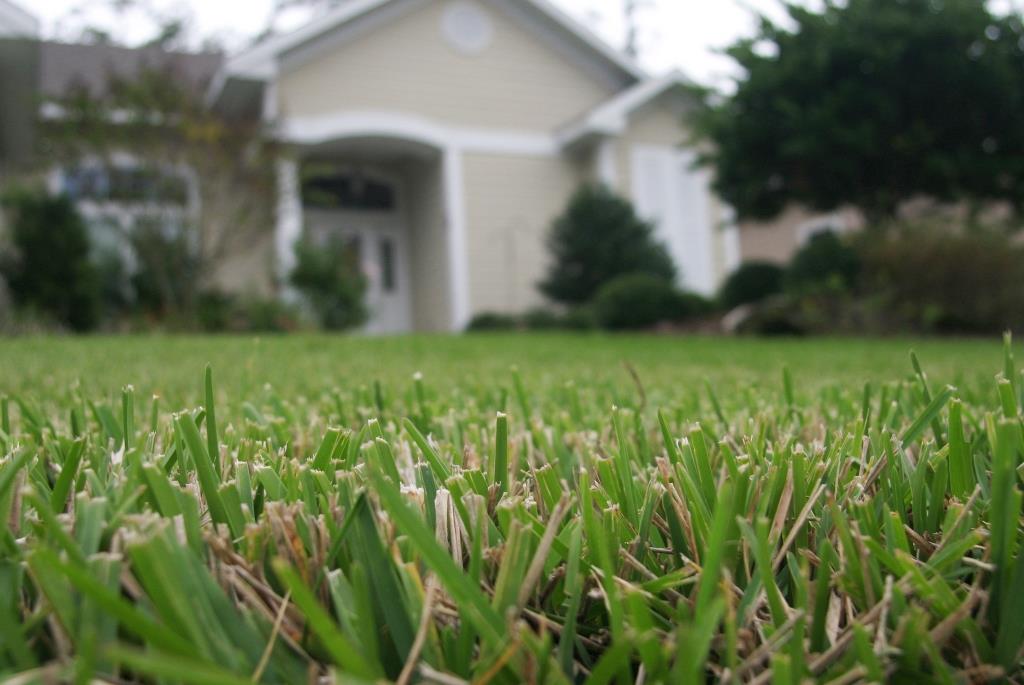Written by: Khadejah Scott, Horticulture, Agriculture, & Natural Resources Extension Agent, UF/IFAS Extension – Wakulla County
A well-manicured lawn not only enhances the beauty of your property but also provides a welcoming outdoor space. In North Florida, where warm weather and abundant rainfall create ideal conditions for lush green lawns, proper mowing practices play a crucial role in maintaining a healthy and vibrant landscape. With the right techniques and considerations tailored to the unique characteristics of this region, you can achieve a pristine lawn that becomes the envy of the neighborhood. In this article, we will explore essential tips and insights for mowing your North Florida lawn, helping you unleash the full potential of your outdoor haven while ensuring its long-term health and sustainability.

Mowing Heights
The turfgrass species’ growth pattern and leaf width influence the ideal mowing height. Grass species that grow horizontally and have narrow leaf blades are often cut lower than grasses that grow upright and have wider leaf blades. Because of its numerous tiny leaf blades, Bermudagrass is an example of a plant that is mowed at low heights. St. Augustinegrass, on the other hand, has wider leaf blades and is cut at a higher height. Rooting depth is also influenced by mowing, with deeper roots developing in response to higher mowing heights. Greater resistance to drought, insects, disease, nematodes, temperature stress, poor soil conditions, nutritional deficiencies, and traffic are benefits of the deeper root system. The main cause of turf damage is frequent mowing below the suggested heights for each species, which should be avoided.
Mowing Frequency
The frequency of lawn mowing is determined by the rate at which the grass grows, which is influenced by various factors such as the type of grass, time of year, weather conditions, and the level of maintenance. In North Florida, the need for mowing during winter months may vary depending on the climate and the type of grass present. Grasses like bahiagrass, which require less maintenance, may primarily be mowed to remove seedheads rather than cutting the leaf blades. To maintain a healthy lawn, it is recommended to mow frequently enough to remove no more than one-third of the blade height at a time. Preserving an ample amount of leaf surface is crucial to allow for photosynthesis, especially when the grass is exposed to environmental or site-related stresses.

Using Grass Clippings
Leaving grass clippings on the lawn is generally beneficial as it aids in recycling nutrients and organic matter, while reducing waste in landfills. When lawns are regularly mowed, clippings pose minimal issues. Microbes in the soil readily decompose the clippings, returning valuable organic matter and nutrients to the soil without contributing to thatch buildup under normal conditions. However, infrequent mowing can lead to excess clippings, resulting in clumping and potential thatch formation. Excessive thatch can create various problems, including reduced water infiltration, increased risk of pests and diseases, and diminished turf quality. To mitigate environmental concerns, it is crucial to sweep up any grass clippings from hard surfaces like sidewalks or driveways. These clippings contain nutrients that, if washed into storm drains or water bodies, can contribute to water pollution. By sweeping them back onto the lawn, the grass can benefit from the nutrients while minimizing environmental impact.
Proper mowing practices are essential for maintaining a healthy and vibrant lawn in North Florida’s unique climate. Understanding the growth patterns of different grass species, adjusting mowing frequency accordingly, and leaving clippings on the lawn to recycle nutrients are key aspects of lawn maintenance. By following these guidelines, homeowners can achieve a well-manicured lawn that enhances the beauty of their property while promoting environmental sustainability. Additionally, regular mowing helps prevent thatch buildup, ensures optimal photosynthesis, and reduces the risk of pest and disease infestations. By implementing these best practices, residents of North Florida can enjoy a lush, resilient, and visually appealing lawn that serves as a welcoming outdoor space for years to come. Remember, mowing is not just a chore but an art that contributes to the overall health and aesthetics of your landscape. UF/IFAS provides a wealth of information online regarding maintaining a well-manicured lawn. For any questions or concerns, be sure to consult with your local UF/IFAS Extension Office.
- The Third Place - April 11, 2024
- Tomato Tips: Keys to Success - February 29, 2024
- Camellia -The Rose of Winter - January 25, 2024
